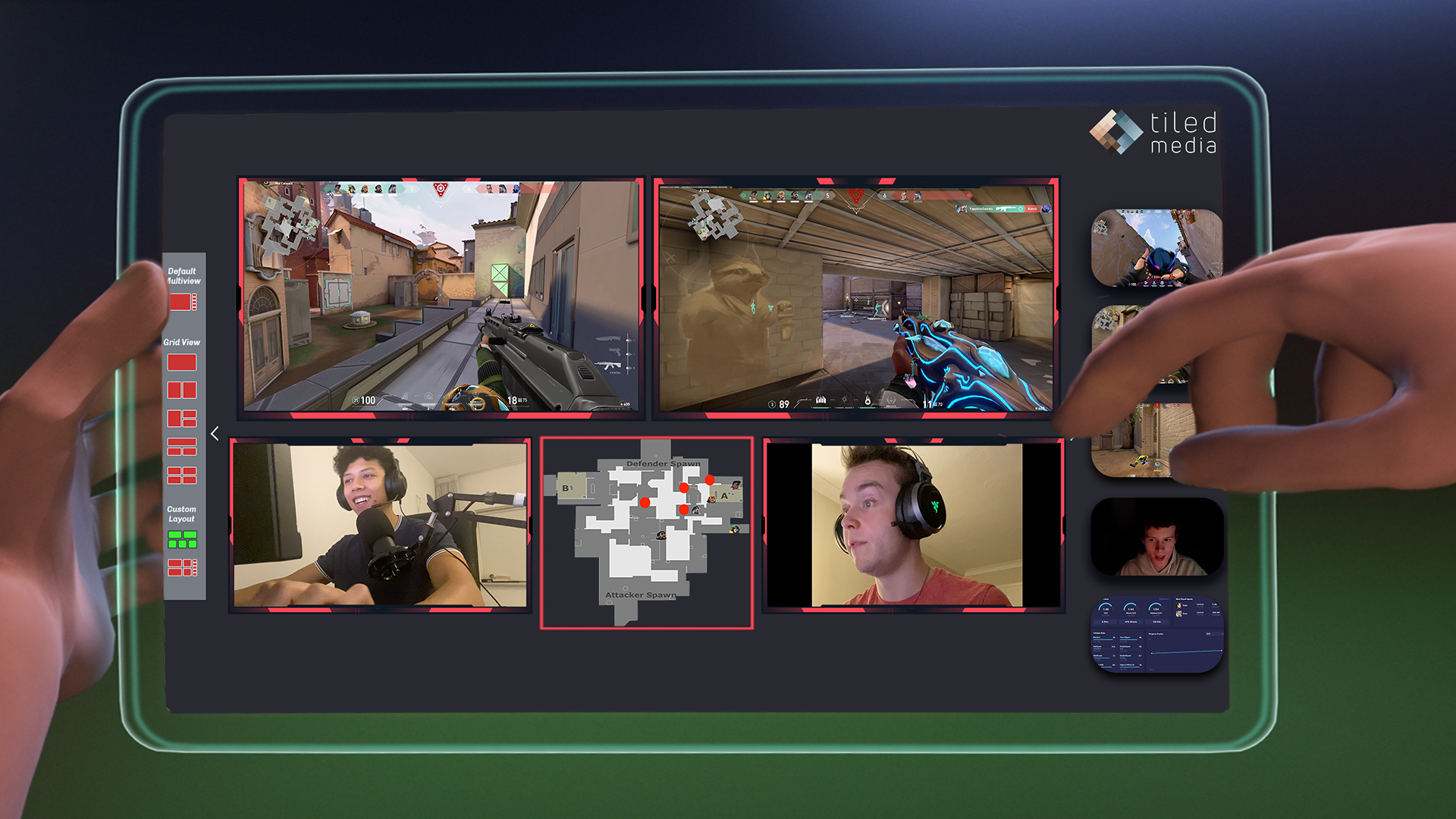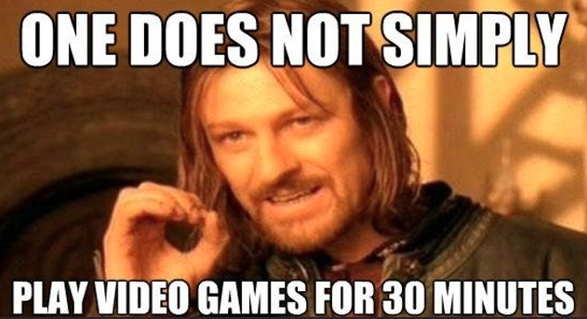Esports & Multiview: Let Viewers Become the Final Boss

A note before we examine the topic of esports, remember to download the Tiledmedia Player that contains a Mosaic Multiview demo with esports content for Android and iOS
A Noob’s guide to esports
Gaming is at the cutting edge of entertainment today, 2.5 billion people play video games globally. The estimated value of the video gaming industry in 2022 is about 200 billion US dollars, and it is expected to grow to around 270 billion dollars in 2025. Early this year, the Gaming industry saw a number of high-profile acquisitions: Microsoft bought Activision-Blizzard, the world’s largest game developer and publisher, and their competitor Sony acquired Bungie. With so many people participating and so much money involved, it is no wonder a sub-industry of professional and competitive gaming sprang up in recent years, this is called esports. In this blog, we will dive deeper into esports and its audience, after which I’ll explain how Tiledmedia can help esports streaming companies overcome big technical hurdles and give viewers the most flexible and personalized experience to date.
The degree to which esports and its best players are comparable to traditional sports and athletes is still food for debate, but the fact is esports are hugely popular: around 470 million people watched esports in 2021, and the revenue it created was estimated at 1.08 billion dollars. Every day, thousands of people tune in to streaming platforms to watch professional gamers play and interact with the audience. Amazon-owned Twitch, Google’s Youtube and Facebook Gaming have dominated the esports streaming business in the Western world, while the Asian markets are more diversified but also hugely successful. In addition to streaming esports, there are numerous esports tournaments being held around the world, covering games in all kinds of categories. These tournaments attract big audiences and sponsors alike, and over the last few years we’ve seen a major increase in the prize money. The best professional esport teams and players are legitimate celebrities, they have fan clubs with rivalries, there are favorites and underdogs, sponsorships, and betting platforms.
With the industry and its value established, let’s now turn to the audience of esports. It’s clear that esports has a relatively young audience, drawing mostly from the Gen Z and Millennial generations. These young people have a lifetime of consuming goods and services ahead of them, which makes them the most valuable consumer cohort for companies and advertisers. In addition, interest in esports is also breaking through with older age groups. Because streaming has become available for regular people at any time and any place, the average watch time of esports and gaming on streaming platforms is significant, which has led to fierce competition between esports streaming services.

Gaming also has the best memes out of any industry
A viewer’s wish list
This begs the question: What do esports viewers want? First of all, they want flexibility and a low barrier of entry. When a viewer whips out their phone, they want to be able to jump in the live stream straight away, and not encounter any buffering or other hurdles such as a login page. They also want to be notified when their favourite esport gamer starts a stream. Geography is another factor, people are watching esports across the globe, so the streams need to be distributed across borders and continents. All major streaming services know this and have adapted their infrastructure and applications accordingly, but problems arise when the complexity and number of functionalities increase (more on that in a bit).
Furthermore, esports viewers want a clear view of what’s going on in the game. There are some things that make this more difficult. The first difficulty is that esports almost always involve multiple gamers participating in a match, so how would one show both the various real-life players and their virtual characters in an efficient manner? Secondly, virtual levels and arenas in esports can be massive, so how can you show a view of the action that each individual viewer wants to see? Thirdly, if viewers watch esports on their phones, there is only a limited area of screen space to show all this movement and action.
The third main element that viewers want is personalization, this refers to the specific player and viewing angle that viewers want to see when watching an esports game, but also the interaction these viewers have with their favourite esporter and with other viewers.

We at Tiledmedia are always striving to Git Gud
Streaming platforms have to Git Gud
What are the technical problems that esports platforms and content providers face in order to fulfil the wishes listed above? As mentioned, esports streaming involves lots of information that needs to be efficiently shown to the viewer on a screen with a limited size. It is very tough to get the ideal lay-out for viewing esports on a mobile phone, tablet, or computer screen.
Current multiview solutions for esports are usually tied to a particular game, and they haven’t cut across different games and platforms. Letting viewers watch different kinds of games on various devices will increase their viewing time and engagement, increasing the value for streaming providers.
Traditional multiview increases bandwidth and strain on the device decoder, limiting the multiview streams to users with powerful networks and limiting the number of angles that can be shown on a user’s screen. In addition to hardware limitations, the arrangement of the streams on a screen is usually very rigid, the user cannot adjust the arrangement in any meaningful way.
Lastly, espports streaming is an activity that is truly international, which means live streams have to be transported across the globe. This can cause issues if the bandwidth is relatively high when showing different streams at once. Preventing stream drops and buffering is key to retaining viewers all over the world.
Mosaic Multiview to the rescue
Solving the problems listed above might seem like a daunting task, but luckily Tiledmedia has put out our Mosaic Multiview streaming solution. This solution revolutionizes the way content platforms can put out video streaming in terms of flexibility and personalization, and the esports use case is perfectly suited to reap the benefits!
We can handle a limitless number of video streams and angles, the more the better! Because of our tiled-based streaming solution, a Multiview scene with many different video feeds will not significantly increase the required bandwidth on the user side, and it is less of a drag on the hardware decoder of the viewer’s device compared to other existing solutions.
Using Tiledmedia’s solution, an esports platform can freely customize any esports Multiview scene, arranging the various feeds into different main-views and sub-views. Our system supports synchronizing these various feeds, preventing any spoilers or annoying time discrepancies. The Mosaic Multiview solution also cuts through different platforms and devices, this means live encoding each video feed only once for phones and tablets running on both Android and iOS, and also to set-top-boxes.
As with Tiledmedia’s ClearVR solution, the Mosaic Multiview solution is easily integrated into the customer’s existing infrastructure. It is also very flexible when it comes to supporting existing in-app functions and features like advertisements, esports betting, donations, live chats, video/audio synchronization, data collection etcetera.
Lastly, esports is an activity with one of the most cross-border interaction, so it is a good thing Tiledmedia’s Mosaic Multiview solution relies on CDNs and standardized protocols for distribution, which is very suitable for cross-border streaming without buffering and stream-drops.
See for yourself
Curious to see for yourself? Download the latest version of the Tiledmedia Player, it contains the Tiledmedia Player SDK, and has a demo scene of multiple in-game videos, which the user can freely interact with. If you have your own esports or other content that you would like to see in a personalized Multiview scene, please contact us. We are happy to tell you more about our solution and how it can help you out!
November 4, 2022
Blogs

Author
Glenn van der Meer